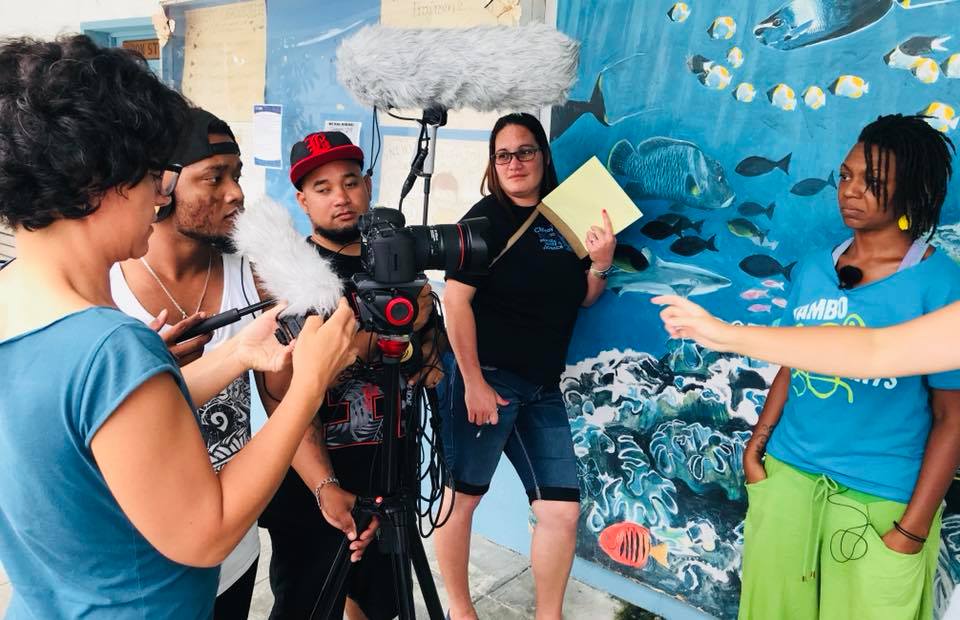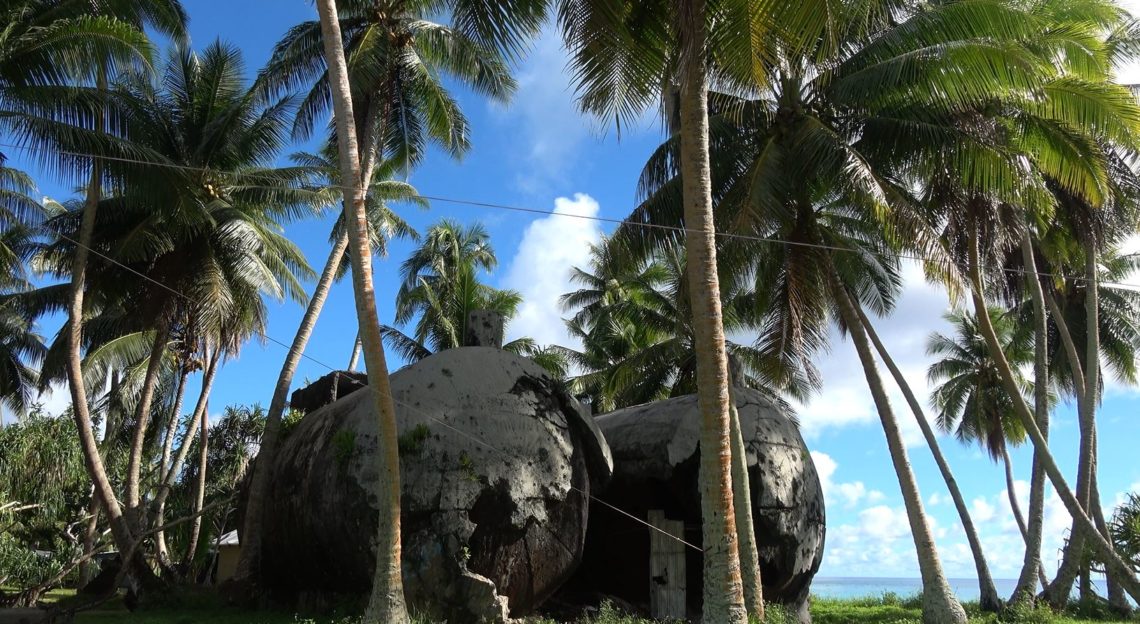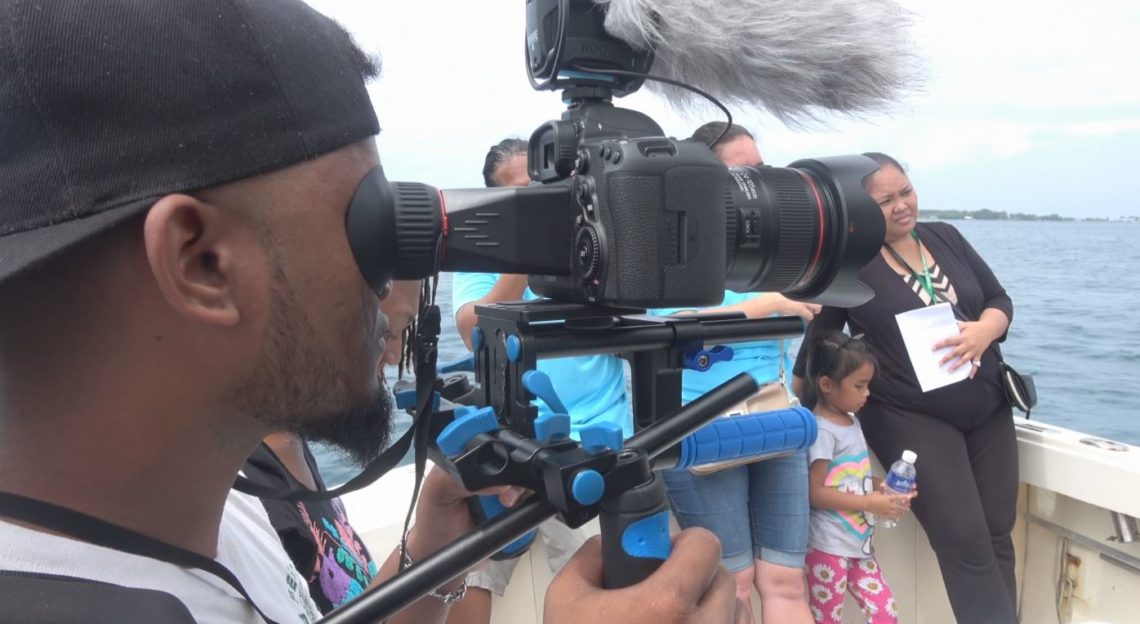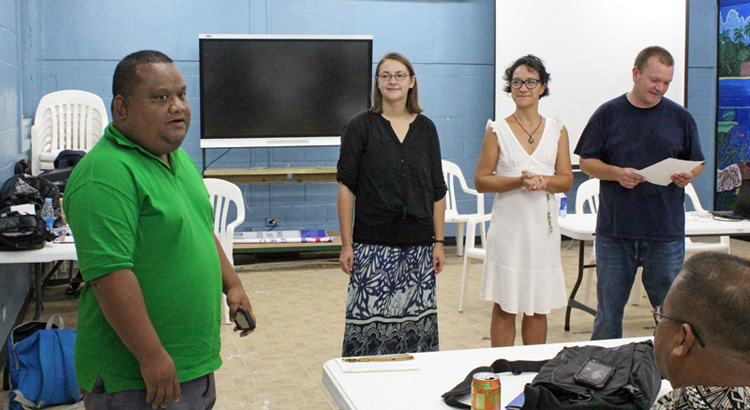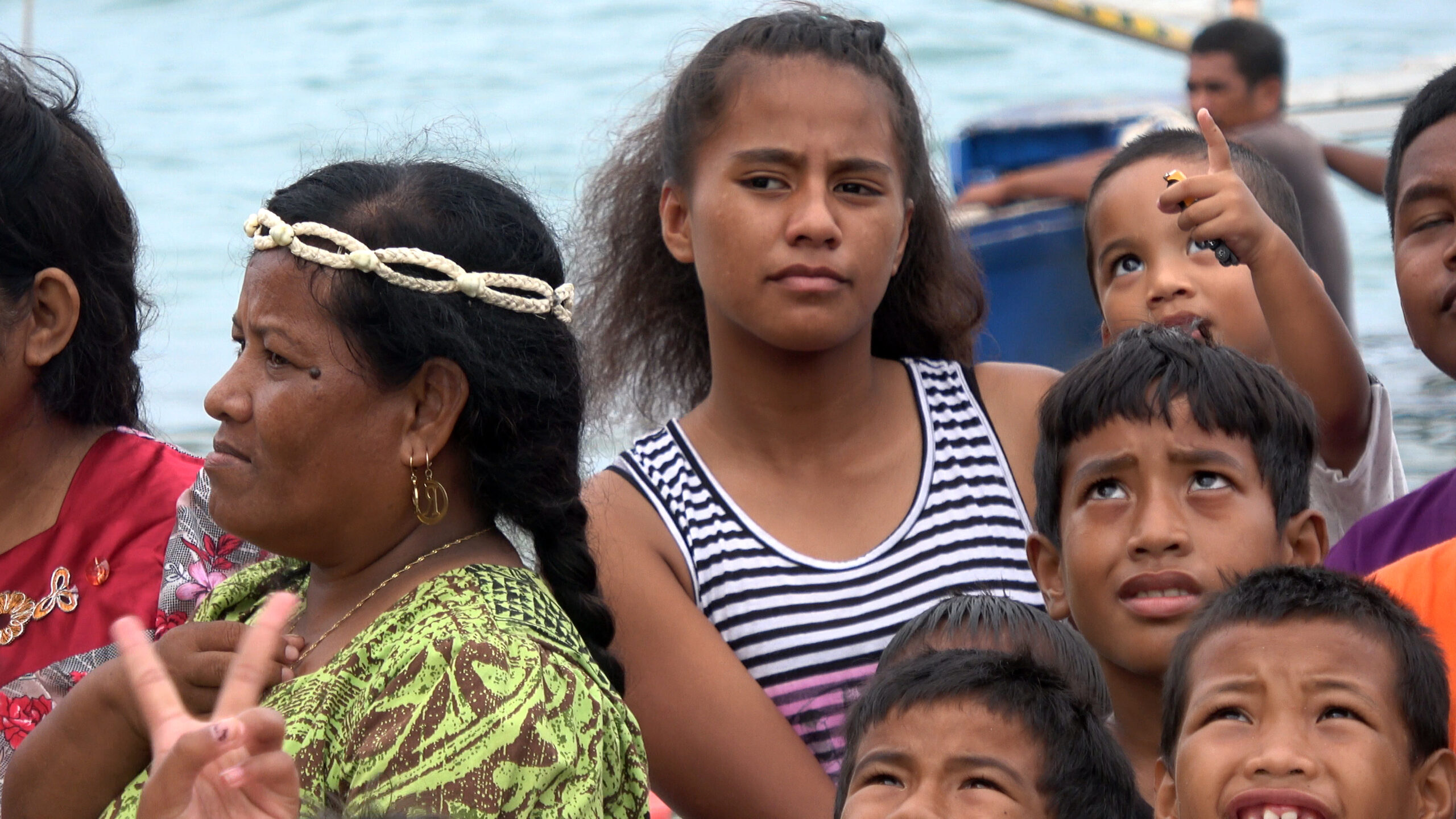
As intended a cinema film has now emerged from our participatory project “withstanding the waves” about the impacts of climate change in the Pacific. We’re still working on some color corrections and some changes to the animated credits. But in principle we are through.
After we had developed the basic dramaturgy of the film with our participants on Majuro, it took us another year before the film was finished. Above all, this was due to the incredible amount of material that we brought back to Germany from the many workshops on the Marshall Islands. Almost a year of participatory filming gave us around 420 hours of material that we viewed and categorized from January 2019 until well into May. In addition, our participants from the RMI still sent us even further material via cloud.




